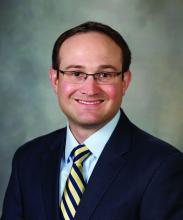Disaster response and global health
Corona virus and disaster preparedness campaign
On January 28, 2020, the US Centers for Disease Control and Prevention (CDC) issued a travel advisory recommending against all nonessential travel to China, in light of the 2019 novel coronavirus (2019-nCoV) outbreak.
Shortly thereafter, a plane that flew out of China was directed to land on a US air force base in California on Friday, January 31. Since then, other US government flights have evacuated patients to military bases throughout the country. The CDC issued a federal quarantine order lasting the 14-day incubation period to these repatriated US citizens. Nearby hospitals were debriefed and command centers set up in anticipation of any required intervention.
Initial diagnostic testing for 2019-nCoV could only be conducted at the CDC, but testing has recently become available at a larger number of laboratories via the CDC’s International Reagent Resource (IRR) network. Signs and symptoms that would warrant diagnostic testing include fever, cough, respiratory symptoms, shortness of breath, and breathing difficulties, in the context of travel to China within the prior 14 days or a high-risk contact with an ill patient. Severe cases can lead to pneumonia, kidney failure, severe acute respiratory distress, and death, with an in-hospital mortality of approximately 4% reported by clinicians in Wuhan, the epicenter of the outbreak (Wang D, et al. JAMA. Published online February 07, 2020. doi: 10.1001/jama.2020.1585).
The influenza vaccine will not protect against 2019-nCoV, and, currently, there is no available vaccine. The best prevention is to cover your mouth and nose with a tissue or your sleeve (not your hands) when coughing or sneezing. Surgical masks are not currently recommended as protection against 2019-nCoV. Hospitalized patients should be in negative-pressure rooms under respiratory and contact precautions, with gowns, gloves, eye protection, and either N95 masks or a powered air purifying respirator (PAPR) worn by clinical staff. Human-to human transmission is reported both within and outside of China (Rothe C, et al. N Engl J Med. Published online, Jan 30, 2020. doi: 10.1056/NEJMc2001468).
Clinical updates are available via the CDC at https://www.cdc.gov/coronavirus/2019-ncov/index.html. Clinicians are advised to check frequently, given the rapidly changing state of this epidemic.
John Agapian, MD, MS, FCCP
Steering Committee Member
Practice operations
New Medicare billing rules bring welcome documentation relief
At the end of 2019, the Centers for Medicare and Medicaid Services (CMS) released several changes to the Medicare Physician Fee Schedule, which will go into effect starting January 1, 2021. Though the adjustments are substantial (the document outlining the revisions is nearly 2,500 pages!), there are a few that deserve highlighting.
The most significant modification contained within the policy involves revisions to E/M codes for office visits. While the changes eliminate 99201, they preserve other graded levels for visits, with increases to the relative value units (RVUs) for most levels.
The most welcome changes for clinicians are twofold. First, billing no longer needs to be based on the maddening practice of trying to meet a minimum number of points from the history and exam. Clinicians can instead now bill based on time spent. The second refreshing modification is that time-based billing need no longer be solely face-to-face but can now be based on the realities of clinical practice today, ie, reviewing information and coordinating care with others.
Thus, these re-valued levels will allow outpatient physicians to bill based on time spent on things other than the office visit, such as time to review lab work and coordinate care with other specialties.
There will also be small changes to billing for pulmonary function testing, bronchoscopy (including the option for new indications for endobronchial valves), and for “brief communications via technology.” For a recap of these and other changes coming in January 2021, CHEST and ATS have produced a free webinar which is found online at: http://www.chestnet.org/Guidelines-and-Resources/Resources/Clinical-Practice-Resources.
Timothy Dempsey, MD, MPH
Steering Committee Fellow-in-Training
Deep Ramachandran, MD, FCCP
Steering Committee Member




